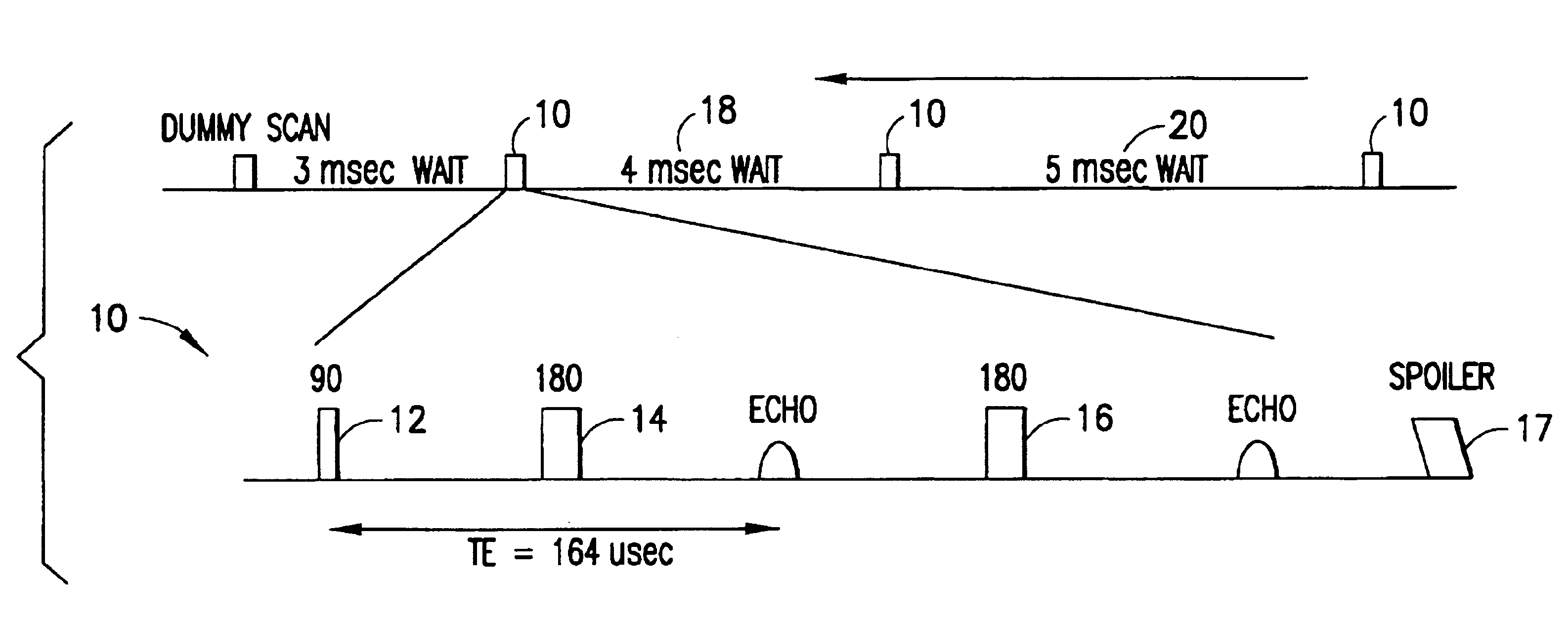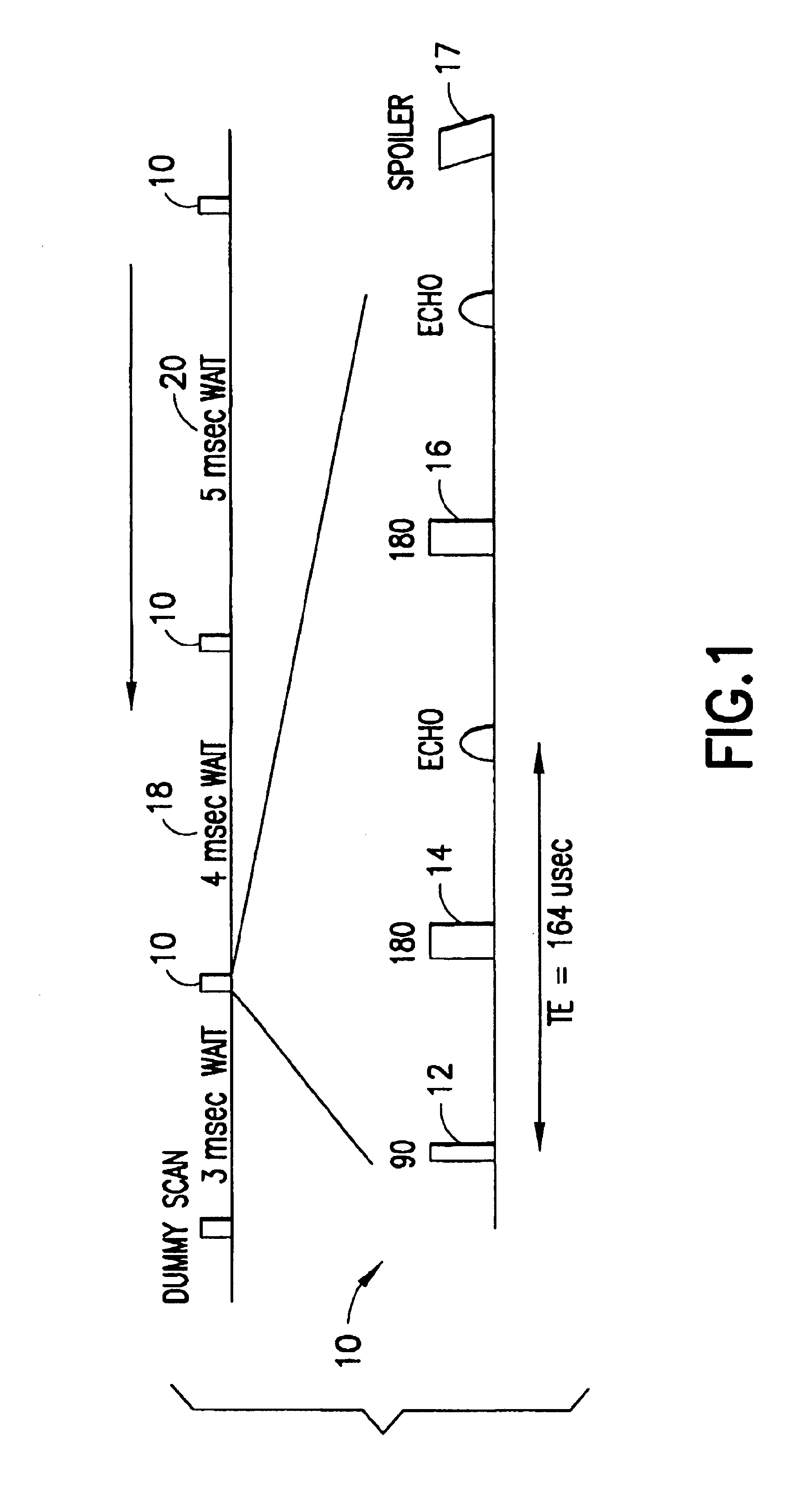Nuclear magnetic resonance apparatus and methods for analyzing fluids extracted from earth formation
a technology of nuclear magnetic resonance and extraction fluid, which is applied in the field of methods for analyzing extracted formation fluid, can solve the problems of reversible changes, many inefficiencies inherent in this process, and the oil producing formation is almost always undersampled
- Summary
- Abstract
- Description
- Claims
- Application Information
AI Technical Summary
Benefits of technology
Problems solved by technology
Method used
Image
Examples
Embodiment Construction
1. Variable Wait Time Measurement
Methodology
Variable wait time (VWT) measurements allow T1 measurements to be made on flowing samples. These measurements allow for fluid characterization (such as during pumpout) and flow rate calculations.
FIG. 1 shows a non-limiting pulse sequence useful in the present invention. In this example, each group of pulses 10 is comprised of an initial pulse 12 and two refocusing pulses 14, 16 with an echo spacing, TE, (in this case, TE equal to 164 μs) as shown in the lower line of the figure. While two refocusing pulses are shown in the illustrated embodiment, in practice one or more refocusing pulses may be used. Furthermore, one skilled in the art would recognize that alternative echo spaces may be suitably employed. (Because rf pulses are applied in the presence of a rather large static field gradient (˜100 G / cm), the flip angle and phase of the resulting mutations vary widely. Therefore, pulses in the CPMG traditionally called 90 degree and 180 degr...
PUM
 Login to View More
Login to View More Abstract
Description
Claims
Application Information
 Login to View More
Login to View More - R&D
- Intellectual Property
- Life Sciences
- Materials
- Tech Scout
- Unparalleled Data Quality
- Higher Quality Content
- 60% Fewer Hallucinations
Browse by: Latest US Patents, China's latest patents, Technical Efficacy Thesaurus, Application Domain, Technology Topic, Popular Technical Reports.
© 2025 PatSnap. All rights reserved.Legal|Privacy policy|Modern Slavery Act Transparency Statement|Sitemap|About US| Contact US: help@patsnap.com



